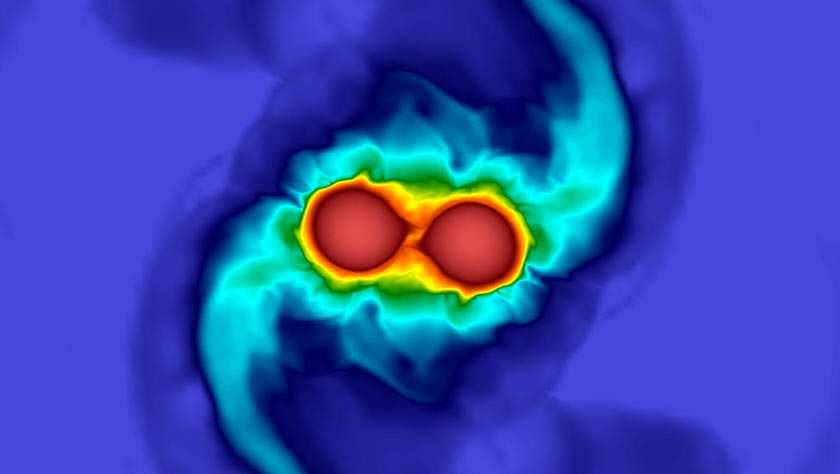Gravitational-wave researchers at the University of Birmingham have developed a new model that promises to yield fresh insights into the structure and composition of neutron stars.
The model shows that vibrations, or oscillations, inside the stars can be directly measured from the gravitational-wave signal alone. This is because neutron stars will become deformed under the influence of tidal forces, causing them to oscillate at characteristic frequencies, and these encode unique information about the star in the gravitational-wave signal.
This makes asteroseismology — the study of stellar oscillations — with gravitational waves from colliding neutron stars a promising new tool to probe the elusive nature of extremely dense nuclear matter.
